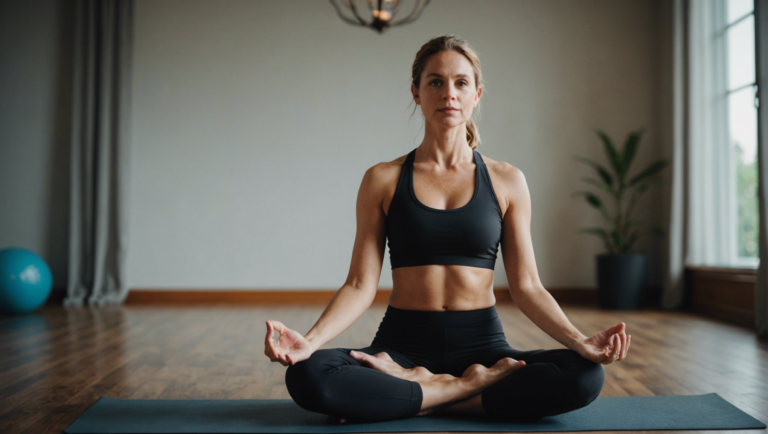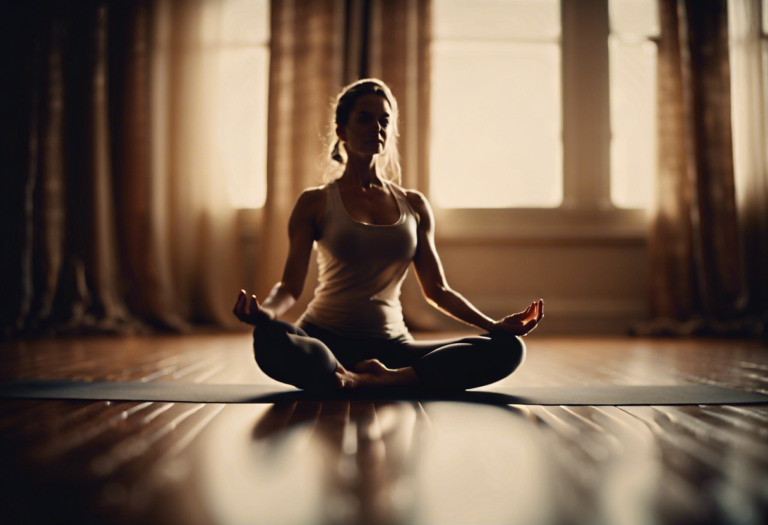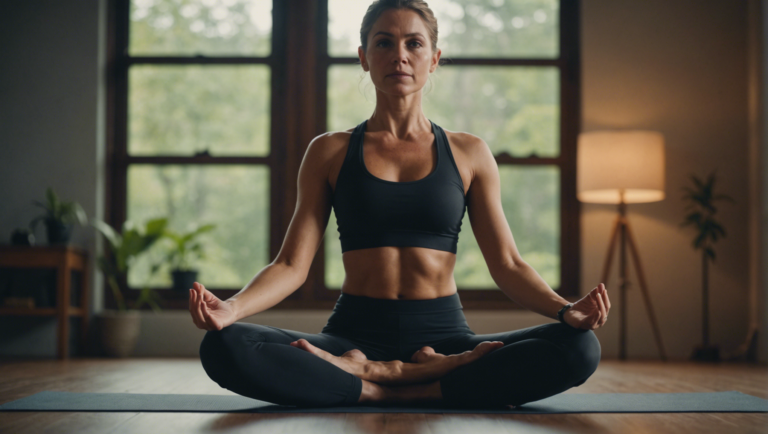Guidelines On Choosing The Right Length For Your Yoga Strap
Guidelines on Choosing the Right Length for Your Yoga Strap
When selecting a yoga strap, one of the key considerations to keep in mind is the length of the strap. Choosing the right length for your yoga strap is crucial to ensure that you can fully benefit from its use during your practice. Here are some guidelines to help you determine the appropriate length for your yoga strap:
Understanding the Basics
Before diving into the specifics of choosing the right length for your yoga strap, it’s essential to understand the basics. Yoga straps are commonly used to deepen stretches, improve flexibility, and achieve proper alignment in various yoga poses. They can also aid in achieving challenging poses for beginners or individuals with limited flexibility.
Measurement Guide
To determine the ideal length for your yoga strap, consider your height, flexibility, and the intended use of the strap. A general rule of thumb is that taller individuals may require longer straps to accommodate their height, while individuals with higher flexibility levels may opt for shorter straps for better control in their practice.
Versatility in Length
When selecting a yoga strap, opting for an adjustable strap can provide versatility in length. Adjustable straps typically have loops or D-rings that allow you to customize the length according to your needs. This feature is beneficial if you plan to use the strap for various poses that may require different lengths.
Length for Different Poses
For basic poses that require minimal extension, such as seated forward bends or gentle shoulder stretches, a shorter yoga strap (around 6 feet) may suffice. On the other hand, more complex poses like King Pigeon pose or Cow Face pose may necessitate a longer strap (around 8 feet) to accommodate the increased range of motion.
Personal Preference
Ultimately, the right length for your yoga strap also boils down to personal preference. Some practitioners may prefer slightly longer straps for added flexibility and room to adjust, while others may find shorter straps more manageable and easier to work with during their practice.
Trial and Error
If you’re unsure about the ideal length for your yoga strap, don’t hesitate to experiment with different lengths to see what works best for you. Trying out various poses with different strap lengths can help you determine which option provides the most support, comfort, and effectiveness in your practice.
Choosing the right length for your yoga strap is a personalized decision that hinges on factors like height, flexibility, intended use, and personal preference. By understanding these guidelines and experimenting with different lengths, you can pinpoint the optimal strap length that enhances your yoga practice and aids you in achieving your wellness goals.
Understanding the Different Materials Used in Yoga Straps
Yoga straps are essential accessories that help yogis of all levels deepen their practice by providing support and enhancing flexibility. One important aspect to consider when choosing a yoga strap is the material it is made of. Each material offers unique benefits and characteristics that cater to different preferences and needs. In this guide, we will explore the various materials commonly used in yoga straps to help you make an informed decision based on your practice requirements.
Cotton Yoga Straps: Lightweight and Durable
Cotton yoga straps are popular among practitioners due to their lightweight and durable nature. These straps are soft to the touch, making them comfortable to use during poses that require direct contact with the skin. Additionally, cotton straps offer a good grip, which is essential for maintaining stability and alignment in yoga poses. If you prioritize comfort and versatility in your yoga practice, a cotton strap may be the right choice for you.
Nylon Yoga Straps: Strength and Resilience
Nylon yoga straps are known for their strength and resilience, making them ideal for individuals who prefer a more sturdy and long-lasting option. These straps are less likely to stretch over time, providing consistent support during various poses and stretches. Nylon straps also dry quickly, making them convenient for practitioners who engage in hot yoga or prefer to clean their gear regularly. If durability and reliability are your top priorities, a nylon yoga strap could be the perfect fit for your practice.
Polyester Yoga Straps: Eco-Friendly and Sustainable
Polyester yoga straps are gaining popularity among environmentally conscious yogis due to their eco-friendly and sustainable properties. These straps are typically made from recycled materials, making them a great choice for those looking to reduce their carbon footprint. Polyester straps offer the same level of durability and performance as nylon while contributing to a greener planet. If sustainability is an essential factor for you when selecting yoga gear, a polyester strap might align with your values.
Hemp Yoga Straps: Natural and Antibacterial
Hemp yoga straps stand out for their natural and antibacterial properties, making them a hygienic option for yogis concerned about cleanliness. Hemp is a highly durable material that becomes softer with use, providing a comfortable grip during practice. Additionally, hemp is naturally resistant to mold and mildew, ensuring that your strap remains fresh even after intense workouts. If you prioritize hygiene and prefer a sustainable, plant-based material, a hemp yoga strap could be an excellent choice for you.
Choosing the right material for your yoga strap is a personal decision that depends on your preferences, priorities, and values as a yogi. Whether you opt for the lightweight comfort of cotton, the strength of nylon, the eco-friendly nature of polyester, or the natural properties of hemp, selecting a high-quality yoga strap will enhance your practice and support you on your yoga journey. By understanding the characteristics of each material, you can make an informed choice that aligns with your needs and enhances your overall yoga experience.
The Importance of Adjustability in Yoga Straps
Yoga straps are essential accessories for practitioners of all levels. They provide support, aid in achieving proper alignment, and help deepen stretches. When selecting a yoga strap, one crucial aspect to consider is adjustability. Adjustable yoga straps offer versatility and customization to cater to individual needs, making them a valuable tool in your practice.
The Versatility of Adjustable Yoga Straps
Adjustable yoga straps come in various lengths, typically ranging from 6 to 10 feet. This variability allows practitioners to adapt the strap to different poses and body shapes. For instance, a longer strap may be preferable for poses requiring a wider reach, such as Paschimottanasana (Seated Forward Bend), while a shorter strap can provide ample support in poses like Gomukhasana (Cow Face Pose).
Customized Support and Alignment
The ability to adjust the length of a yoga strap enables practitioners to customize the level of support and assistance they receive during practice. Whether you are working on flexibility, attempting challenging poses, or recovering from an injury, being able to modify the strap’s length ensures that you can tailor your yoga practice to suit your specific requirements.
Enhanced Comfort and Safety
Using an adjustable yoga strap allows you to find the perfect length that promotes comfort and safety during yoga sessions. By securing the strap at the ideal size, you can prevent straining or overstretching, ultimately reducing the risk of injuries. Moreover, having the flexibility to adjust the strap according to your comfort level enhances your overall yoga experience.
Multi-Purpose Utility
Apart from aiding in yoga poses, adjustable yoga straps have multi-purpose utility both on and off the mat. These versatile accessories can be utilized for stretching exercises, physical therapy, and even as alignment guides. Their adjustable nature makes them suitable for various activities, ensuring that you get the most out of your investment.
Finding Your Perfect Fit
When choosing an adjustable yoga strap, consider your height, flexibility, and the types of poses you frequently practice. Opt for a length that allows for ample adjustability while offering the right amount of support. Additionally, look for durable materials that can withstand regular use and provide a secure grip.
Embrace the Benefits of Adjustability
The importance of adjustability in yoga straps cannot be overstated. These versatile accessories cater to diverse needs, offering customized support, enhanced comfort, and improved safety during practice. By selecting an adjustable yoga strap that suits your requirements, you can optimize your yoga sessions and elevate your overall well-being.
Exploring the Various Buckle Options for Yoga Straps
Tips for Proper Maintenance and Care of Your Yoga Strap
Maintaining and caring for your yoga strap is crucial to ensure its longevity and effectiveness in your yoga practice. By following some simple guidelines, you can keep your yoga strap in optimal condition for a longer period. Let’s dive into some essential tips for proper maintenance and care of your yoga strap.
Importance of Proper Care for Your Yoga Strap
Your yoga strap is a valuable tool that helps enhance your flexibility, improve your alignment, and deepen your stretches during yoga practice. To maximize its benefits and longevity, it is essential to take good care of your yoga strap.
Cleaning Your Yoga Strap Regularly
Regular cleaning of your yoga strap is essential to keep it free from sweat, dirt, and bacteria that can accumulate over time. To clean your yoga strap, simply wipe it down with a damp cloth or towel after each use. For a deeper clean, you can hand wash it using a mild detergent and then air dry it thoroughly before the next use.
Avoiding Direct Sunlight and Extreme Temperatures
Exposure to direct sunlight and extreme temperatures can damage the material of your yoga strap over time. It is best to store your yoga strap in a cool, dry place away from direct sunlight when not in use. Avoid leaving it in hot cars or places with high humidity to prevent any potential damage.
Checking for Wear and Tear
Regularly inspect your yoga strap for any signs of wear and tear, such as fraying edges or weakened seams. If you notice any damage, it is best to replace your yoga strap to prevent any safety hazards during your practice. Investing in a high-quality yoga strap can also ensure its durability over time.
Proper Storage of Your Yoga Strap
Proper storage is key to maintaining the shape and integrity of your yoga strap. Consider rolling up your yoga strap neatly after each use to prevent it from getting tangled or damaged. You can also store it in a yoga mat bag or a dedicated storage pouch to keep it clean and organized.
Avoiding Excessive Weight or Pressure
While yoga straps are designed to support your body weight during poses and stretches, it is essential to avoid putting excessive pressure or weight on them to prevent any damage. Be mindful of how you use your yoga strap and avoid pulling or stretching it beyond its limits to ensure its longevity.
Taking good care of your yoga strap is essential to maintain its functionality and effectiveness in your yoga practice. By following these simple tips for proper maintenance and care, you can ensure that your yoga strap remains a reliable tool to enhance your yoga experience for years to come.
Conclusion
In essence, selecting the right length for your yoga strap is pivotal to ensuring a safe and effective practice. Understanding the different materials used in yoga straps allows you to choose one that aligns with your preferences and needs, whether it be durability, eco-friendliness, or softness. The importance of adjustability cannot be overstated, as it offers versatility in your yoga sessions by accommodating various poses and body types. Exploring the various buckle options provides insight into the convenience and security they offer, allowing you to pick the most suitable one. implementing tips for proper maintenance and care of your yoga strap prolongs its lifespan and ensures hygienic use during your practice. By combining these guidelines and considerations, you pave the way for a more comfortable, safe, and fulfilling yoga experience.


